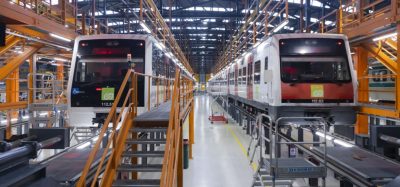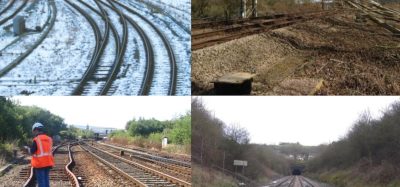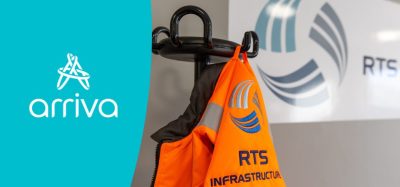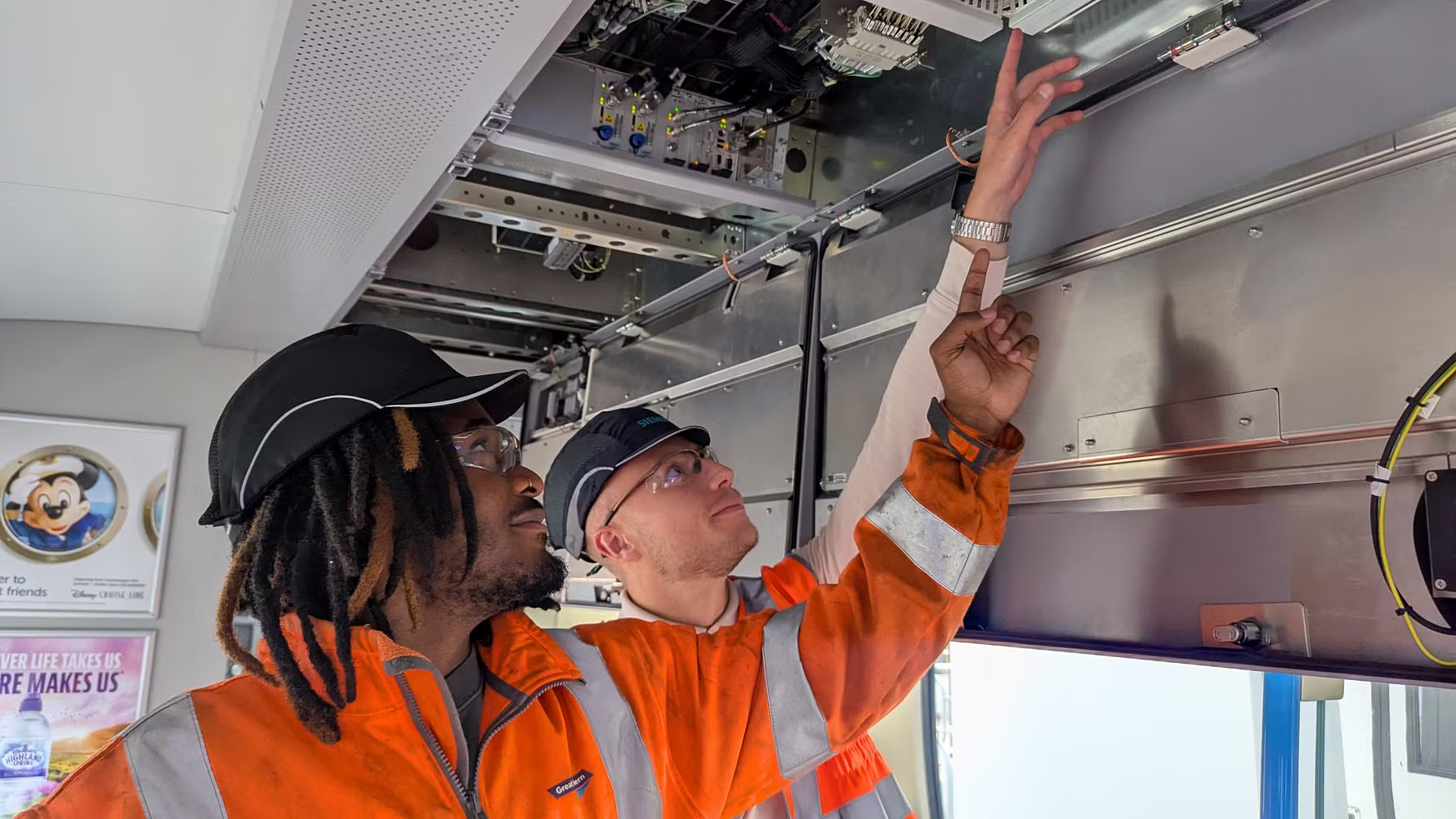Growing demand for lone worker protection on UK rail network
Posted: 11 April 2014 | | 1 comment
More than six million people in the UK work either in isolation or without the safety net provided by direct supervision, often in places or circumstances that put them at potential risk. In the transport sector, lone workers often include ticket office and platform staff, train managers, engineers and delivery drivers. For Global Railway Review, James Kelly, Chief Executive of the British Security Industry Association (BSIA) discusses how there is an increased need for lone worker protection on mainline railways.
Almost by definition, lone working can be both intimidating and at times dangerous, so the protection of lone workers involves a twofold approach; not only to provide safeguards but also to offer reassurance to the individuals involved.
Providing vulnerable employees with a mechanism to call for help if they feel threatened should be a key element of a company’s health and safety policy, and also provides reassurance that employers are fulfilling their duty of care. The UK’s private security industry has been working with the police and end-users in order to develop a combination of practice, technology and standards capable of providing an effective solution to the risks that lone workers face.
The development of technology and practice in the field has focused on encouraging and enabling lone workers to assess the risks they might be facing and provide them with the means both to summon aid in an emergency and collect information that can be used in evidence, if necessary. This has led to the creation of lone worker devices equipped with mobile phone technology that connect employees quickly and discreetly with an emergency response system that has direct links to the police. A number of products are commercially available from BSIA member companies, ranging from applications on smartphones to dedicated GPS/GSM Lone Worker devices.
Lone worker products are connected to an Alarm Receiving Centre (ARC), which receives and manages the alarm call and can quickly request emergency services or other response if required. Sending a pre-activation message allows users to inform the ARC when they are entering an area with a potential risk – e.g. before walking across a dark car park. If the user then experiences a problem or encounters a situation that seems likely to escalate into something more serious, then the lone worker device can be activated to summon help.
Activating the lone worker device automatically triggers a voice call to the ARC, where operators monitor the audio channel in real-time, enabling them to assess the situation and alert the police if the user needs help or protection. No further action is required by the user as the device effectively functions as an open microphone. This procedure allows the police to optimise their response to genuine emergencies by providing a ‘moving picture’ of the incident, including an increase or decrease in risk as it happens. The very knowledge that this is taking place is, of course, a major boost to the user’s confidence. The ARC captures an audio recording of the incident for future action such as police investigation of legal proceedings.
Identifying the risks
Despite the benefits of using lone worker technology in situations where employees are often working disparately, it could be said that the UK’s rail industry is one market which, so far, has not fully adopted lone worker security technology – at least not for those staff who are customer facing. When discussing security risks on the railways, rail operators’ focus seems to lie more often than not on the engineering-based staff rather than customer-facing employees.
That being said, recent figures suggest that public transport workers are the fourth most likely employees to be assaulted in the workplace. In a recent study, rail workers were ranked as facing the highest risk of assault compared to the average for all other sectors.2
Within the UK’s rail industry, many roles are customer-facing, and deal directly with members of the public. The roles that incorporate elements of lone working include drivers, other on-board staff, revenue protection staff (including ticket officers, staff at barriers, etc.) platform, train dispatch, maintenance workers, engineers and security staff as well as agency workers.
Alcohol and drug use by members of the public can be a major problem faced by lone workers on mainline railways, with many commuters using this service as an alternative to the car when travelling to and from various social destinations. Alcohol and drug use can make people aggressive and their behaviour unpredictable so this makes lone workers more vulnerable to attacks. These risks are increased late in the evening or early in the morning, as there are generally fewer people around to witness such attacks. The nature of the job also plays a key role in increasing risks to individual security. In some jobs, lone workers hold positions of power or authority over customers or passengers, which can cause resentment and an increase in aggression.
Boyd (2002, cited by the International Labour Office) described the main triggers for passenger violence within the rural and urban public transport network as alcohol consumption, lack of information provided to passengers during delays, quality of the environmental surroundings, disputes over baggage and failure to meet customer expectations.3
A study by the Rail Safety and Standards Board (RSSB) was commissioned to determine the extent to which the risk of assault on passengers and rail staff was increasing and also the perception of that risk among employees. A subsequent guide published by the RSSB outlined best practice guidance in reporting and recording assaults on rail staff, including verbal abuse, threat and assault.4
Despite this, it is a recognised fact that a considerable number of incidents involving violence towards rail staff go unreported. There can be many reasons why staff do not report incidents. Reasons for this range from lack of confidence in the system to insufficient time allowed.
Protecting employees
In the transport sector, many of the security measures already in place are intended to safeguard the vehicle rather than the individual, however, many companies are now coming round to the fact that making sure employees feel safe while going about their day-to-day business should also be a key factor in their overall security policy. For transport sector employees, the very transient nature of some roles, coupled with long, often anti-social working hours, place them at particular risk.
Taking care of such employees is a key driver of security purchasing decisions in the transport sector, according to research commissioned in 2012 involving members of the BSIA’s Lone Worker Section, who also reported that demand from insurers providing employee liability insurance is also causing transport companies to sit-up and take notice of the issue of lone worker protection.
Employers are also becoming increasingly aware of their own responsibilities towards safeguarding their staff, as claims under the Corporate Manslaughter Act become increasingly widespread, and it is for this reason that 100% of BSIA Lone Worker Section members are expecting demand from the transport sector to increase in the next 12 months.
This increased awareness of employers’ legal responsibilities was also highlighted in other research released in 2013, which revealed the growing importance of robust health and safety measures to protect staff and businesses from potential Corporate Manslaughter claims, arising when deaths are caused by management failures that are deemed to constitute a gross breach of duty of care.
Figures published in 20135 show that the number of corporate manslaughter cases rose to 63 in 2012, compared with 45 in 2011 – an increase of 40%. An increased focus by the Crown Prosecution Service on corporate manslaughter claims was also found, claiming that momentum is growing around enforcement of the 2007 Corporate Manslaughter and Corporate Homicide Act, with a number of new cases in the pipeline.
The development of British Standard BS8484, a Code of Practice for the provision of Lone Worker Device Services, has been a key element of the security industry’s work to ensure employers select the right solution. Responsible employers will consider the health and safety of their lone workers as a top priority, and the use of BS8484 compliant lone worker devices/applications can help by connecting such employees with an emergency response system that has direct links to the Police. BS8484 is the basis on which Police respond to lone worker systems, so it’s important for employers to choose a supplier who works to these standards. A Police response cannot be guaranteed by a supplier who isn’t audited and compliant with BS8484.
To help transport companies make informed decisions when sourcing a lone worker service, the BSIA has produced a guide6 to lone worker services for the transport sector, which includes information on best-practice, employers’ legal obligations and relevant British Standards. The guide also includes real-life examples of where lone worker solutions have helped transport companies to reduce the risk faced by their employees.
The BSIA’s guide to lone worker services for the transport sector can be downloaded, free-of-charge, from the Association’s website:
References
- bsia.co.uk/lone-workers
- Understanding guidance and operational practice of lone worker personal security, published by the Rail Safety and Standards Board, 2011.
- Violence and stress at work in the transport sector, accessed on 28/2/14 at http://siteresources.worldbank.org/INTTSR/Resources/wp205.pdf
- Understanding guidance and operational practice of lone worker personal security, published by the Rail Safety and Standards Board, 2011
- Figures published by law firm Pinsent Masons.
- http://www.bsia.co.uk/publications.php?r=Q0V41P883771
Biography
With a career in trade association leadership spanning almost 20 years, James Kelly brings a wealth of experience to his role as Chief Executive of the British Security Industry Association (BSIA). Graduating in Law in 1982, James quickly made the transition to business, achieving postgraduate qualifications in Management and an MBA from the University of Strathclyde in 1992. James joined the BSIA as Chief Executive in January 2010. His responsibilities include leading the team and providing strategic direction to the Association and its members. He maintains a high level of contact with government, civil servants and overseas bodies, and is heavily involved in industry regulatory activities.
Stay Connected with Global Railway Review — Subscribe for Free!
Get exclusive access to the latest rail industry insights from Global Railway Review — all tailored to your interests.
✅ Expert-Led Webinars – Gain insights from global industry leaders
✅ Weekly News & Reports – Rail project updates, thought leadership, and exclusive interviews
✅ Partner Innovations – Discover cutting-edge rail technologies
✅ Print/Digital Magazine – Enjoy two in-depth issues per year, packed with expert content
Choose the updates that matter most to you. Sign up now to stay informed, inspired, and connected — all for free!
Thank you for being part of our community. Let’s keep shaping the future of rail together!








We provide staff/lone worker devices which are affordable and discreet and have quick links to a 24/7 monitoring centre.
Could someone please contact me to discuss things further.